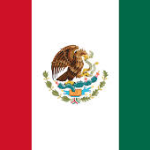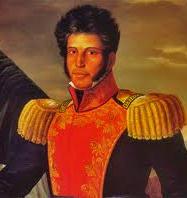Read the Guerrero Decree of Emancipation
By: Dr. Talia Weltman-Cisneros, Southern Methodist University, Dallas, Texas, U.S.A.
Editor’s Note: Many people in the world do not even know his name. Yet, Vicente Guerrero (1782-1831) should be revered throughout history as a leader of liberty, independence, and peace. He was a general in Mexico’s war of independence; he helped write the nation’s constitution, and he abolished slavery during his presidential administration. Vicente Guerrero of Mexico was of mixed African descent. The state of Guerrero, Mexico is named in his honor. Read more about this man of peace.

He Worked on the Family Farm
In 1782, Vicente Ramón Guerrero Saldaña was born in Tixtla, a city northeast of Acapulco, in what is today his namesake state of Guerrero. Of mestizo origin, including African descent, Guerrero was born into a family that was dedicated to farming. As such, the young Guerrero similarly entered into the agricultural field, serving as a mule driver.
President Vicente Guerrero of Mexico (1782-1831) should be revered throughout the world as a leader of liberty, independence, and peace.
He Joined the Independence Movement
As an adult, Guerrero was attracted to the independence movement and joined the insurgency against Spanish rule by working with his father as an assistant in a gunsmith’s shop. However, his celebrated military career truly advanced in 1810, after meeting with and impressing General José María Morelos, another mestizo of African descent, who commissioned Guerrero to join the Galeana family in attacking the Spanish troops in the south of Mexico.
Upon his official insertion into the insurgency, Guerrero had numerous military successes, including at the battle of Izúcar in 1812, and in leading troops in Taxco, after which he would be appointed to the level of lieutenant colonel by Morelos.
He Became a Military Leader
Even as the insurgency declined in strength after the death of Morelos in 1815, Vicente Guerrero continued his role as a dedicated and valiant leader of the independence movement. With fewer resources and manpower, he used guerrilla warfare tactics to surge ahead, defeating Spanish battalions in several cities, thus able to re-arm and increase the insurgency again.
Vicente Guerrero was Valiant and Dedicated to His Homeland
As his military successes mounted, Guerrero transformed himself into a great threat to the Spaniards. As a result, the Spanish viceroy, Juan Ruiz de Apodaca, sent Guerrero’s own father to offer him amnesty and to persuade the independence leader to give up his arms in exchange for money and the preservation of his military title. However, Guerrero responded with a famous decree that is now inscribed on a plaque dedicated to the hero at his home in Tixtla:
“Independencia y libertad, o muerte. Primero está mi Patria que mi padre”
(Independence and liberty, or death. My homeland comes first, before my father)
Vicente Guerrero’s valiance and dedication to his homeland further contributed to his leadership role in the independence movement. In January 1821, Guerrero was invited by Agustín de Iturbide, another Mexican independence hero, to discuss a plan for independence known as the Plan de Iguala (Plan of Iguala). The Plan de Iguala served as a constitutional roadmap in the transition of power from Spain to Mexico, fomenting the independence of the new nation in September 1821. In agreeing with the plan’s stipulations, Guerrero handed over control of his troops and was appointed as a general by Iturbide. Iturbide would become the first head-of-state of the new nation with the title of Constitutional Emperor of Mexico.
However, despite achieving independence, political turmoil plagued the new nation. Guerrero and Iturbide clashed due to Iturbide’s imperial designs for the new nation. Iturbide would eventually fall and would be followed by Guadalupe Victoria, Mexico’s first president, from 1824 to 1829. Again, however, another internal, political rebellion arose, this time led by Nicolás Bravo against Victoria. With the help of Guerrero, Bravo’s rebellion was suppressed, yet a new presidency was in order.
Vicente Guerrero Becomes President of Mexico
In 1829, Vicente Guerrero’s political career reached its high point. With the citizen majority supporting him, Guerrero became the second president of Mexico from April to December 1829. Although his presidency was short-lasting, it was filled with several important accomplishments. A Spanish attempt to reconquer Mexico was defeated. In addition, an expedition was commissioned to organize a group of Haitians in Cuba that would aid in an uprising against the Spaniards on that island.
He Abolishes Slavery in Mexico
Furthermore, perhaps the most poignant accomplishment of Guerrero’s presidency was the abolition of slavery in Mexico. Likely linked to his own mixed origins, Guerrero was steadfast in identifying himself not with a particular ethnicity or caste, but rather as “americano.”[i] His loyalty lay with his “patria,” his homeland, not with any particular segment of the Mexican nation. Thus, it was logical that Guerrero would officially enact what Miguel Hidalgo had originally decreed in 1810—the abolition of slavery in the new Republic. The Guerrero Decree stipulated the specifics of this enactment:
The Guerrero Decree
The President of the United States of Mexico, know ye: That desiring to celebrate in the year of 1829 the anniversary of our independence with an act of justice and national beneficence, which might result in the benefit and support of a good, so highly to be appreciated, which might cement more and more the public tranquility, which might reinstate an unfortunate part of its inhabitants in the sacred rights which nature gave them, and which the nation protects by wise and just laws, in conformance with the 30th article of the constitutive act, in which the use of extraordinary powers are ceded to me, I have thought it proper to decree:
1st. Slavery is abolished in the republic.
2nd. Consequently, those who have, until now, been considered slaves are free.
3rd. When the circumstances of the treasury may permit, the owners of the slaves will be indemnified in the mode that the laws may provide. And in order that every part of this decree may be fully complied with, let it be printed, published, and circulated.
Given at the Federal Palace of Mexico, on the 15th of September, 1829. Vicente Guerrero To José María Bocanegra
His Life Comes to an Abrupt End
Despite such momentous accomplishments and an illustrious military career, Vicente Guerrero’s presidency and life would come to an abrupt end. He left the presidency in December 1829 in order to fight a rebellion levied against him by his own vice president, Anastasio Bustamante. His absence resulted in him being declared unfit to govern the Republic. While continuing to combat the rebellion and hopefully return to power, the great independence fighter was captured through bribery and deceit, and he was eventually executed on February 14, 1831.
Vicente Guerrero is Remembered as a Hero
While several moments of his life were marred with conflict, the political and military career of Vicente Guerrero would be characterized as heroic. His legacy as a steadfast leader in the independence movement and his unsurpassed dedication to his homeland has been remembered and celebrated throughout the history of Mexico.
His famous phrase, “Mi patria es primero” (My homeland comes first) is now the motto for the state of Guerrero, which is also named in his honor. And his most notable accomplishment, the abolition of slavery in the new Republic, has marked Vicente Guerrero as a great leader and freedom fighter for all humanity.
“Mi patria es primero” (My homeland comes first) is now the motto for the state of Guerrero.
[i] Author’s Note: There are several definitions for what is identified as a continent depending on cultural and geographic regions. In Latin America and some European countries, the continents are America, Asia, Europe, Africa, Oceania, and Antarctica. This is in contrast to the division of continents used in China and in numerous English-speaking countries such as the United States, where America is divided into North and South America. Thus, Guerrero’s mention of being “americano” refers to being a citizen of the entire American continent (North and South).
Bibliography
“Vicente Guerrero.” Enciclopedia de México. Tomo VII. 1987.
“Vicente Guerrero (1782-1831).” Guerrero. Gobierno Del Estado. Gobierno Del Estado De Guerrero.
Web. http://guerrero.gob.mx/articulos/himno-a-vicente-guerrero/.
“Vicente Guerrero, 1782-1831.” Mexico 2010. Gobierno Federal De Mexico. Web.
(Reprinted with permission from the author and from the Dr. Martin Luther King, Jr. Taskforce, Southfield, MI, U.S.A., Pathways to Freedom in the Americas, www.FreedomPathways.org)


